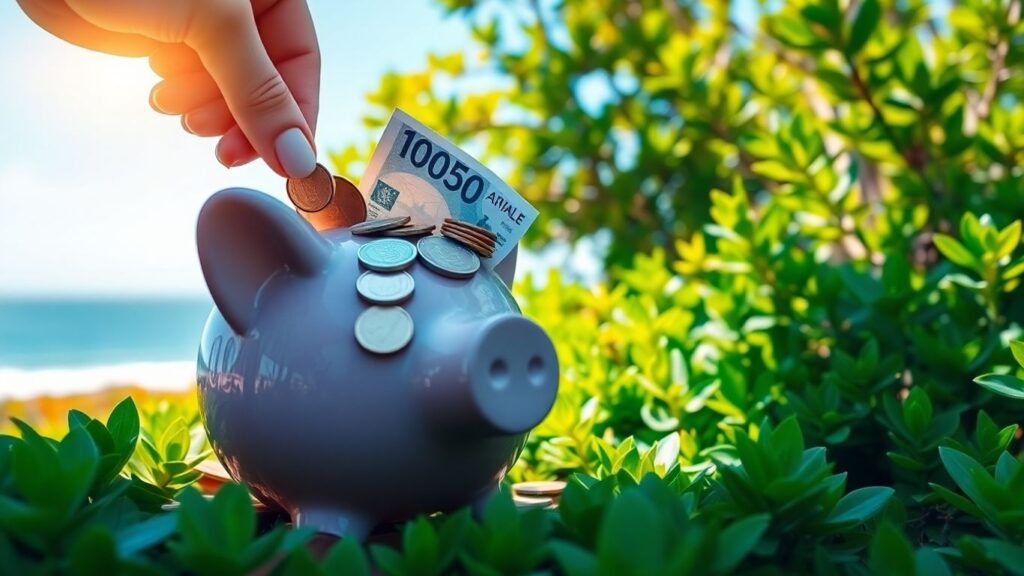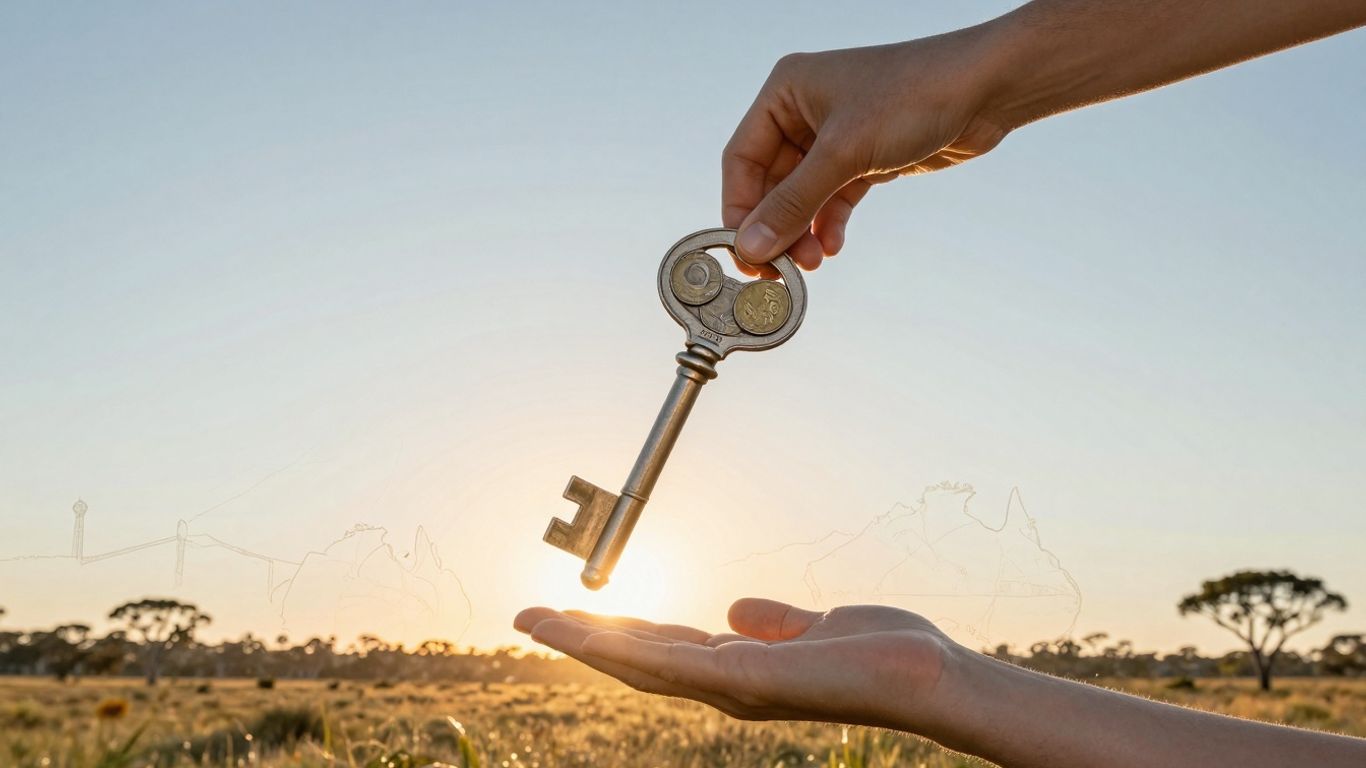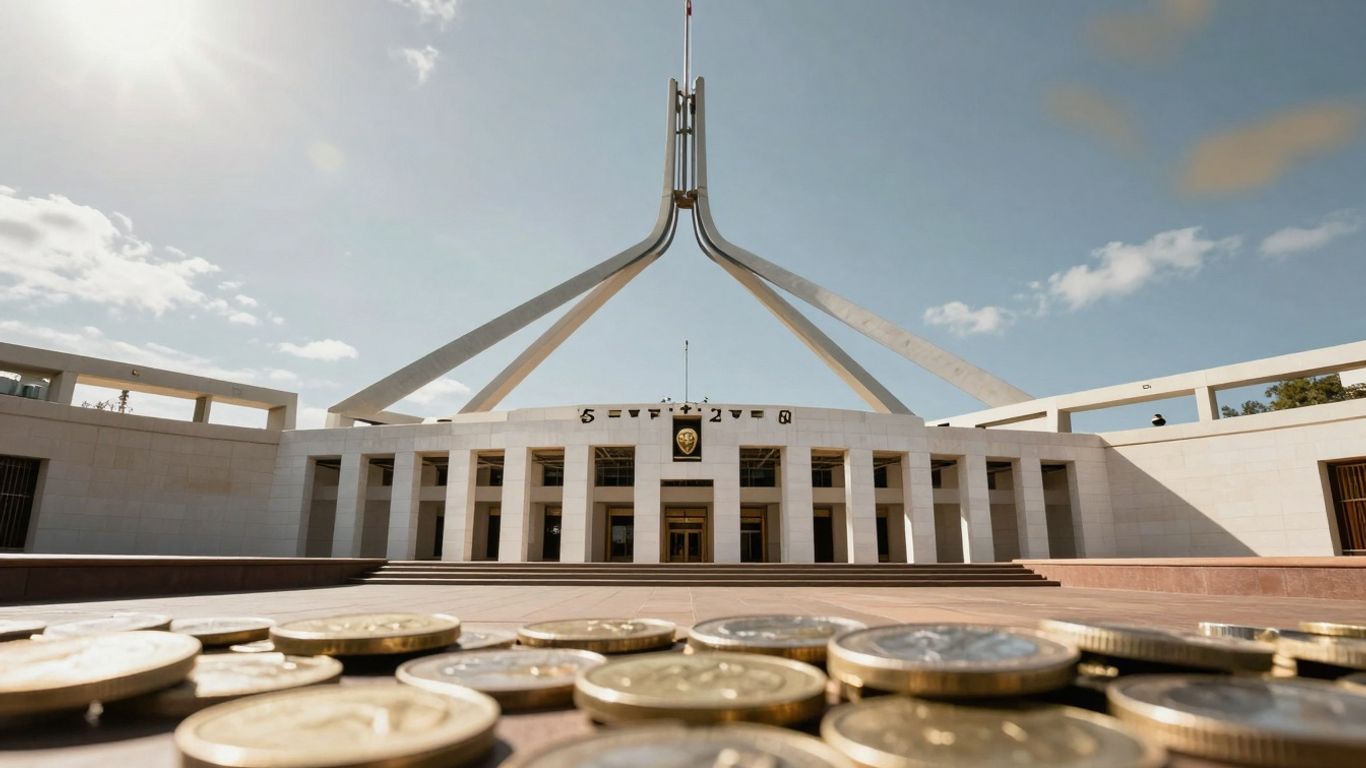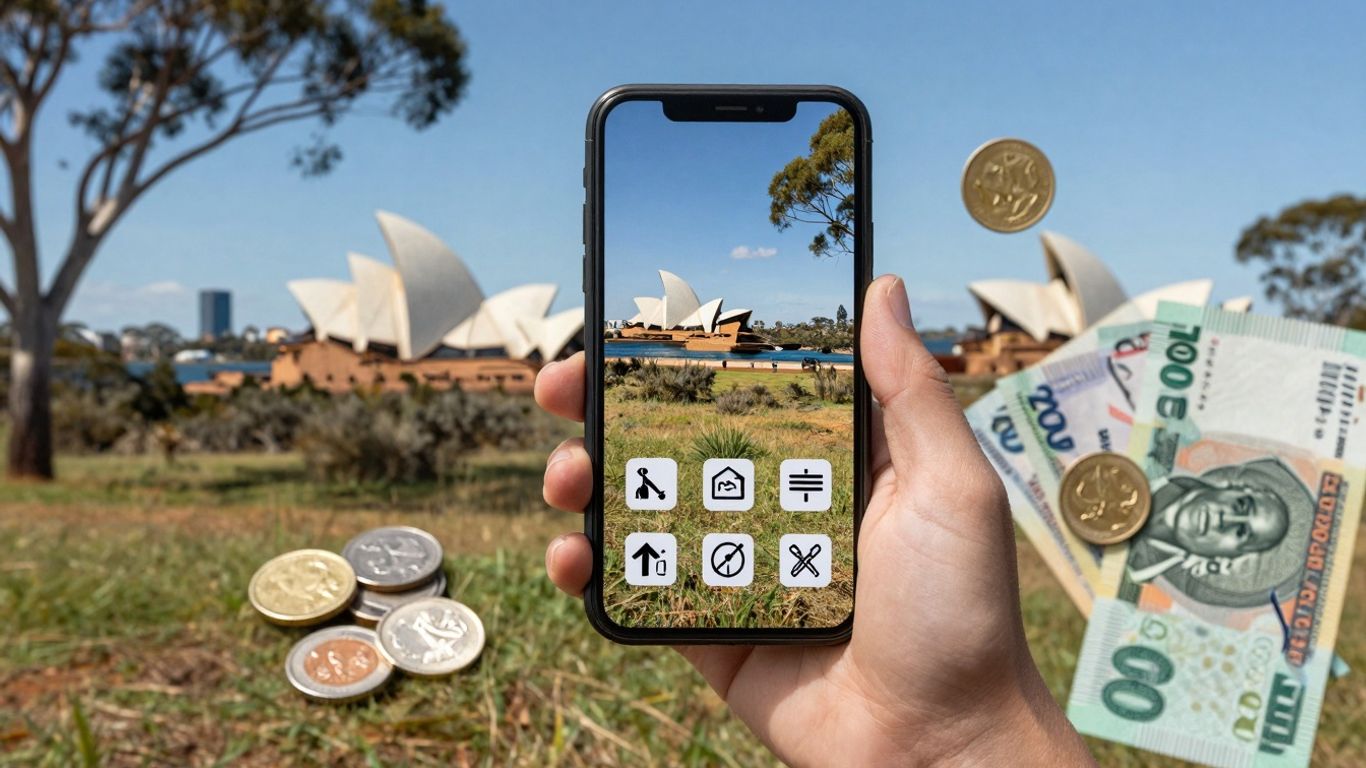Feeling like your cash just vanishes once payday hits? You’re not alone. With costs going up all over Australia, keeping your wallet happy can feel like a real challenge. But learning clever ways to save money isn’t just about having a bit extra; it’s about feeling more secure and less stressed. Whether you’re saving for a rainy day, a deposit on a house, or just want a bit more breathing room, small changes can make a big difference. We’ll go through some straightforward tips to help you spend less and save more, so you can feel more in control of your finances.
Key Takeaways
- Get a handle on where your money goes by tracking income and expenses to find those sneaky leaks.
- Set clear savings goals, both big and small, using the SMART method to keep you on track.
- Make saving automatic by setting up direct deposits or using apps that round up your purchases.
- Build a safety net with an emergency fund, starting small but being consistent, and keep it in a high-interest account.
- Look for ways to cut back on big expenses like housing, transport, and insurance, and be smart about everyday spending like food and subscriptions.
Understanding Your Spending Habits

Alright, let’s get real about where your hard-earned cash is actually going. You might think you’ve got a handle on things, but often, money just seems to vanish into thin air, doesn’t it? The first step to saving more is figuring out exactly what’s happening with your money. It sounds a bit boring, but trust me, it’s the foundation for everything else.
Track Your Income and Outgoings
This is where you get down and dirty with the numbers. Grab a notebook, use a spreadsheet, or download one of those handy apps your bank offers. For a month, just write down every single dollar that comes in and every single dollar that goes out. Seriously, everything. That morning coffee, the parking ticket, the streaming service you barely use – it all adds up.
- Income: List all your paychecks, any side hustle money, or even birthday cash.
- Outgoings: This is the big one. Break it down into categories like rent/mortgage, groceries, transport, bills, entertainment, and those little impulse buys.
It might look a bit scary at first, but seeing it all laid out is super helpful.
Identify Hidden Money Leaks
Once you’ve tracked your spending for a bit, you’ll start to see patterns. These are your ‘money leaks’ – those sneaky expenses that chip away at your savings without you even noticing. Think about those subscriptions you forgot you signed up for, or those daily coffees that cost a fortune over a year. Maybe it’s buying lunch out every single day when packing your own would save you heaps.
It’s easy to spend money without thinking, especially when you’re just tapping your card or phone. Those small, regular expenses can really add up over time, turning into a significant chunk of your budget before you even realise it.
Become Mindful of Spending Triggers
What makes you want to spend money? Is it stress? Boredom? Seeing something shiny on social media? Maybe it’s just walking past your favourite shop on the way home. Understanding these triggers is key. If you know that a tough day at work often leads to an online shopping spree, you can plan for it. Maybe you decide to call a mate instead, go for a walk, or have a pre-planned ‘treat’ that doesn’t cost much.
- Emotional Triggers: Feeling down, stressed, or even overly happy can lead to impulse buys.
- Environmental Triggers: Advertisements, sales, or even just being in a shopping centre can tempt you.
- Social Triggers: Keeping up with friends or feeling like you need to buy something because others are.
Setting Smart Savings Goals

Alright, so you’ve got a handle on where your money’s going. That’s a massive first step! Now, let’s talk about where you actually want that money to end up. Without a clear destination, saving can feel a bit like wandering aimlessly. Setting goals gives your savings a purpose, making it way easier to stay on track, especially when life throws you a curveball or a tempting sale pops up.
Define Short-Term and Long-Term Objectives
Think about what you’re saving for. Is it something you want in the next few months, like a new phone or a weekend getaway? Or are you looking further ahead, perhaps for a house deposit, a new car in a few years, or even retirement?
- Short-Term Goals (Under 1 year): These are usually for things you want relatively soon. Examples include:
- Building a small emergency fund ($1000 is a good start).
- Saving for a holiday.
- Paying off a small debt.
- Buying a new appliance.
- Long-Term Goals (Over 1 year): These are the bigger picture items that require more patience and planning.
- Saving for a house deposit.
- Paying off a mortgage.
- Saving for your children’s education.
- Investing for retirement.
Having both types of goals means you get the satisfaction of reaching smaller targets while still working towards those life-changing big ones. It keeps things interesting and prevents you from getting discouraged.
Utilise SMART Goal Setting
Just saying "I want to save more" isn’t really going to cut it. To make your goals actually happen, you need to make them SMART. This is a pretty common acronym, but it works for a reason:
- Specific: What exactly do you want to achieve? Instead of "save money," try "save $5,000 for a car deposit."
- Measurable: How will you know when you’ve reached it? The $5,000 figure is measurable.
- Achievable: Is this realistic given your income and expenses? Can you actually save $5,000 in the timeframe you’re thinking?
- Relevant: Does this goal matter to you? Does it align with your values and overall life plans?
- Time-bound: When do you want to achieve this by? Setting a deadline, like "within 12 months," creates urgency.
So, a SMART goal might look like: "Save $5,000 for a car deposit within 12 months by putting aside $417 each month."
Connect Visually With Your Goals
Sometimes, numbers on a spreadsheet just don’t feel real enough. To really keep your motivation high, try making your goals visual. This helps you feel more connected to what you’re working towards.
Having a visual reminder can be a game-changer. It’s like having a little cheerleader for your savings tucked away in your wallet or on your phone.
Here are a few ideas:
- Screensaver/Wallpaper: Use a picture of your dream holiday destination, your future home, or whatever represents your goal.
- Vision Board: Create a collage of images and words that represent your aspirations and stick it somewhere you’ll see it daily.
- Savings Jar/Tracker: If you’re saving for something specific, you could even create a physical tracker where you colour in sections as you save.
- Journaling: Write down your goals, why they’re important, and track your progress. Seeing your thoughts and achievements written down can be really powerful.
By making your goals tangible and visible, you’re more likely to stay focused and motivated, turning those abstract desires into concrete achievements.
Automating Your Savings Strategy
Ever feel like your pay cheque just vanishes before you’ve even had a chance to blink? Setting up a system to automatically move money into savings is one of the smartest moves you can make. It takes the decision-making out of it, meaning you save before you even think about spending. It’s like putting your savings on autopilot, and honestly, it’s a game-changer for building up that nest egg without feeling the pinch.
Set Up Direct Deposits on Payday
This is probably the most straightforward way to get your savings sorted. When your wages hit your account, have a portion automatically transferred straight into your savings account. Most banks let you set this up easily through their online banking or app. You can choose a fixed amount or a percentage of your pay. The key is to do it as soon as you get paid, so the money is out of sight, out of mind, and less likely to be spent.
Leverage Round-Up Apps for Spare Change
These apps are brilliant for those little bits of cash you barely notice. When you make a purchase using your linked card, the app rounds up the amount to the nearest dollar and transfers the difference into your nominated savings account. It might seem like pennies, but over time, all those spare coins really add up. It’s a painless way to save without feeling like you’re actively putting money aside.
Automate Contributions to Investment Accounts
If you’re looking to grow your money over the long term, setting up automatic contributions to your superannuation or other investment accounts is a solid plan. Just like with savings accounts, you can schedule regular transfers. This consistent approach helps you benefit from compound growth and makes investing a regular habit rather than a sporadic effort. It’s a fantastic way to build wealth for the future without needing to constantly monitor market fluctuations.
Building Financial Security
Having a solid safety net is pretty important, right? It’s not just about having a bit of extra cash lying around; it’s about feeling secure when life throws you a curveball. Think of it as your personal buffer against unexpected bills or job hiccups. This security allows you to sleep better at night, knowing you can handle whatever comes your way without going into debt.
Create a Dedicated Emergency Fund
This is probably the most talked-about part of financial security, and for good reason. The idea is to stash away enough money to cover your essential living costs for a few months – usually between three and six. It sounds like a lot, but you don’t have to do it all at once. Start small, even if it’s just $20 a week. The key is consistency. You want this money somewhere accessible but not too easy to dip into for non-emergencies. A separate savings account is usually the go-to.
Start Small and Be Consistent
Seriously, don’t get overwhelmed by the idea of saving for months of expenses. If your budget is tight, even putting aside a small amount regularly makes a difference. Think of it like building a habit. Maybe you start by saving $50 from each paycheque. Once that feels comfortable, you can bump it up to $75 or $100. The goal is to make saving a normal part of your financial routine, not a massive chore you dread.
Store Funds in High-Interest Accounts
Once you’ve got that emergency fund growing, you want it to work for you a bit. Look into high-interest savings accounts. While they might not make you rich, the extra interest earned can help your money grow a little faster than a standard account. Some banks offer bonus interest rates if you meet certain conditions, like making regular deposits and not withdrawing any money. It’s a smart way to get a bit more bang for your buck while keeping your funds safe and accessible.
Cutting Down on Major Expenses
Big ticket items are often where the most significant savings can be found. It’s easy to get bogged down in the small stuff, but tackling your largest outgoings can make a real difference to your bank balance.
Review Housing and Utility Costs
Housing is usually the biggest chunk of anyone’s budget. If you’re renting, could you find a cheaper place, maybe a bit further out or a smaller apartment? If you own, refinancing your mortgage might be an option, though it’s worth checking the rates carefully. Beyond the mortgage or rent, look at your energy bills. Simple things like turning off lights when you leave a room, unplugging appliances not in use, and taking shorter showers can add up. Consider a smart thermostat if you don’t have one; they can really help manage heating and cooling costs. Even small changes, like washing clothes in cold water, can trim down those utility expenses over time. It’s about being conscious of your usage.
Optimise Transport Expenses
How do you get around? If you’re driving everywhere, think about alternatives. Could you walk or cycle for shorter trips? Public transport is often cheaper than running a car, especially when you factor in fuel, insurance, and maintenance. If you need a car, make sure it’s fuel-efficient. Regular servicing can also improve its mileage. Carpooling with colleagues or friends can also cut down on costs and wear and tear. Planning your trips to combine errands can also save on fuel and time. For many, reducing car reliance is a big win for their finances.
Compare Insurance Premiums
Insurance is one of those things you hope you never have to use, but it’s essential. However, that doesn’t mean you should be overpaying. It’s a good idea to shop around and compare quotes from different providers at least once a year, or whenever your circumstances change. Don’t just stick with the same company out of habit. Look at your home, contents, car, and health insurance policies. You might find a better deal elsewhere, or you could potentially increase your excess slightly to lower your premium, provided you have the emergency fund to cover it. Always read the fine print to make sure you’re getting the cover you actually need.
Making conscious decisions about your largest expenses can free up a surprising amount of money. It often requires a bit of research and a willingness to change habits, but the payoff is significant.
Clever Everyday Money-Saving Tactics
Cancel Unused Subscriptions
Let’s be honest, most of us have a few subscriptions we’ve signed up for and then promptly forgotten about. Think streaming services you barely watch, apps you downloaded once, or even old gym memberships. These little monthly charges might seem small on their own, but they really add up over time. It’s worth taking a good look through your bank statements and credit card bills to find these hidden drains. Cancelling just one or two unused subscriptions can free up a surprising amount of cash each month.
Reduce Food Waste and Shop With a List
Food waste is a massive money drain. We buy groceries with good intentions, but then things get pushed to the back of the fridge and end up in the bin. A simple way to combat this is to plan your meals for the week. Before you even think about heading to the supermarket, take stock of what you already have in your pantry and fridge. Then, make a detailed shopping list based on your meal plan and what you actually need. Stick to that list like glue when you’re in the store – it’s amazing how much you can save by avoiding impulse buys.
- Meal Planning: Dedicate a bit of time each week to plan your meals.
- Pantry Check: Always see what you’ve got before you shop.
- Strict List Adherence: Only buy what’s on your list.
- Shop Smart: Avoid grocery shopping when you’re hungry – everything looks tempting then!
Take Water From Home Instead of Buying
Grabbing a bottled water when you’re out and about seems convenient, but it’s a habit that costs a fair bit over time. Most of us have a reusable water bottle these days. Make it a habit to fill it up before you leave the house. Whether you’re heading to work, the gym, or just out for a walk, having your own water bottle means you’re not tempted to buy expensive bottled water. It’s a small change, but it makes a difference, and it’s much better for the environment too.
It’s easy to get caught up in the convenience of buying things on the go. But when you stop and think about it, many of these small, regular purchases are just little leaks in your budget. By being a bit more prepared and mindful, you can plug these leaks and keep more of your hard-earned cash.
Maximising Your Income and Credit
Alright, let’s talk about getting more bang for your buck, not just by cutting back, but by actually boosting what’s coming in and using your credit smarts. It’s about making your money work harder for you, plain and simple.
Check Eligibility for Government Entitlements
Did you know there are government benefits and concessions out there that you might be eligible for? Things like family tax benefits, energy bill concessions, or even cheaper public transport passes. It’s worth doing a bit of digging on government websites or chatting with a local community centre to see if you qualify for anything. It’s basically free money that can make a real difference to your budget. Don’t leave it on the table!
Use Credit Responsibly and Avoid Debt
Credit cards and loans can be handy tools, but they can also be a massive drain if you’re not careful. The key is to use them wisely. Always aim to pay off your credit card balance in full each month to avoid those nasty interest charges. If you’ve got existing debt, making a plan to pay it down should be a top priority. It frees up your future income, which you can then put towards your savings goals instead of just servicing old purchases. Think about comparing different credit options too, just to make sure you’re not paying more than you need to. Managing your credit well is a big part of building financial security and can even help improve your borrowing power for things like a home loan check eligibility for government entitlements.
Consider Earning More to Boost Savings
Sometimes, the best way to save more is simply to earn more. This doesn’t always mean quitting your job and starting a business, though that’s an option for some! It could be as simple as:
- Asking for a pay rise if you feel you’re due for one.
- Taking on a few extra shifts or some overtime if your job allows.
- Picking up a side hustle – maybe something you’re good at, like tutoring, freelance writing, or even selling crafts online.
- Renting out a spare room or your parking space if you have one.
Any extra income you bring in can be a fantastic way to accelerate your savings goals. Just remember the golden rule: try not to let your spending increase just because your income has. Put that extra cash straight into your savings or investments.
Staying Motivated on Your Savings Journey
Track Your Progress Visually
It’s easy to get discouraged if you can’t see how far you’ve come. Keeping a visual record of your savings progress can make a huge difference. Think about using a simple chart on your fridge, a dedicated savings app that shows your growth, or even just updating a spreadsheet regularly. Seeing those numbers climb, even slowly, is a real confidence booster. It turns abstract goals into something tangible you can point to. The more you can see your money growing, the more likely you are to stick with it.
Set Milestones and Celebrate Achievements
Saving a big chunk of money can feel like a marathon, not a sprint. Breaking it down into smaller, achievable milestones makes the whole process feel less daunting. Maybe your first milestone is saving $500, then $1000, then enough for a specific purchase. When you hit one of these mini-goals, give yourself a pat on the back! It doesn’t have to be a big splurge; it could be a nice coffee, a movie night, or something small that acknowledges your hard work. These little celebrations keep the momentum going and remind you why you’re doing this.
Make Yourself Accountable to Friends and Family
Sometimes, just knowing someone else is aware of your goals can be a powerful motivator. Chat to a trusted friend or family member about what you’re saving for and how you’re doing. They can offer encouragement when you’re feeling tempted to overspend or celebrate your wins with you. You could even set up a friendly challenge with a mate who’s also trying to save. Just be clear about what kind of support you’re looking for – sometimes just having someone to listen is enough.
Wrapping It Up
So there you have it, a bunch of ways to keep a bit more cash in your pocket. It’s not about doing anything drastic, just making a few smart choices here and there. Whether it’s tracking where your money’s actually going, setting aside a bit each payday, or just remembering to bring your own water bottle, these little things really do add up. Start with what feels easiest for you, and before you know it, you’ll be feeling a lot more in control of your finances. You’ve got this!
Frequently Asked Questions
How can I figure out where my money is going?
It’s pretty simple, mate! Just jot down everything you earn and everything you spend. You can use a notebook, a spreadsheet, or even an app on your phone. This helps you see where your cash is actually going and if you’re accidentally splashing out on things you don’t really need, like too many coffees or subscriptions you’ve forgotten about.
What’s the best way to start saving money?
The smartest way is to make saving automatic. Set up your bank to move a bit of cash into your savings account right after you get paid, before you even have a chance to spend it. Think of it like paying yourself first! Using apps that round up your purchases and save the change can also add up over time without you even noticing.
How much money should I have in an emergency fund?
Ideally, you want enough saved to cover your living costs for about three to six months. This is your safety net for unexpected stuff, like losing your job or needing a sudden repair. Start small if you need to, even $20 a week makes a difference and builds up over time.
Are there any big expenses I can cut down on?
Definitely! Look closely at your biggest bills like rent or your mortgage, your electricity and gas, and how you get around. Sometimes just comparing different phone plans, insurance policies, or even looking at ways to save on petrol or public transport can free up a surprising amount of cash each month.
What are some easy everyday money-saving tricks?
Little things add up! Try cancelling subscriptions you don’t use, like that streaming service you never watch. Plan your meals and shop with a list to avoid buying extra groceries you won’t eat. And always, always bring a water bottle from home instead of buying pricey bottled water when you’re out and about.
How do I stay motivated to keep saving?
It helps to see how far you’ve come! Track your savings progress, maybe with a chart or an app. Set little goals along the way and give yourself a small, sensible reward when you hit them. Telling a mate or family member about your savings goals can also help keep you on the straight and narrow.





